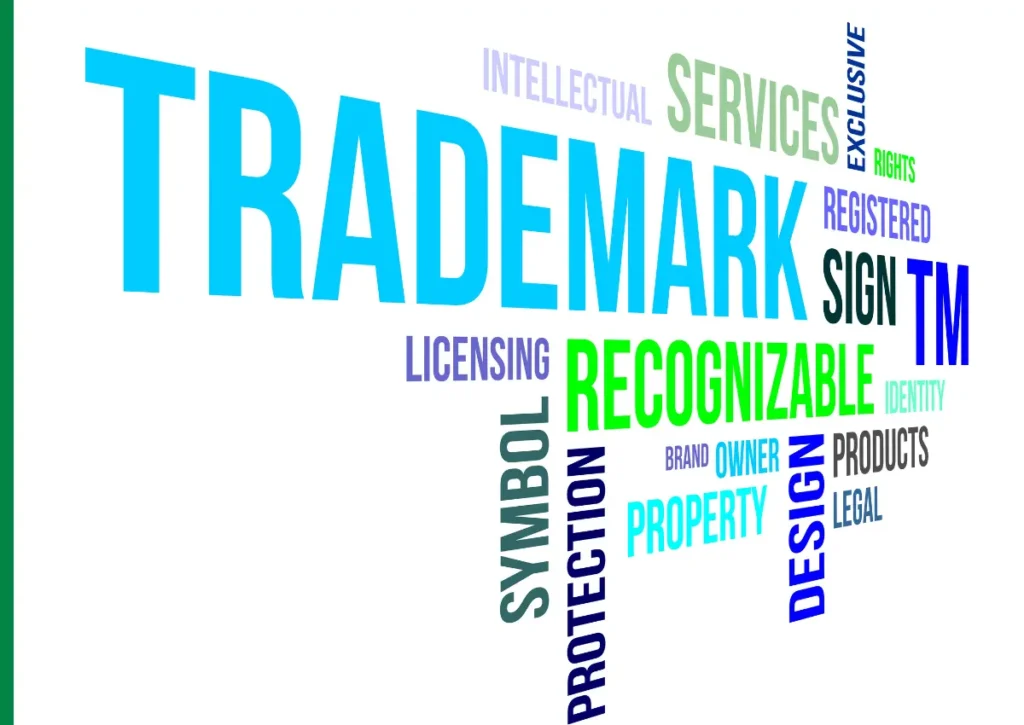In these huge, modern, competitive markets , businesses need brand identity as their essential, valuable business resource. The legal basis for brand protection is trademarks, which allow you to maintain brand identity against unauthorized use of branding elements by competitors.
Every business requiring long-term brand protection and growth needs to grasp the trademark registration process whether they start new ventures or handle existing operations.

In this deeply researched insight, you will know everything about trademark registration from why to how.
Let’s start!
What Exactly Is a Trademark?
Applying a trademark creates a distinctive combination that enables your products to differentiate themselves from competitors in the market. One can protect their intellectual property through trademarks, which take various forms, including brand names, logos, symbols, slogans, taglines, and letters together with numerals, distinctive product packaging, specific color combinations, sound marks, and three-dimensional designs. Brand identity takes root from these combined elements, which form the basis for consumer recognition of your business.
Trademark protection extends indefinitely when owners renew their trademarks every ten years, but patents run for a specific twenty-year period before expiration. Trademark rights offer long-term business protection because they help develop brand recognition and increase market worth by maintaining customer faith throughout extended periods.
Why should you register your trademark?
Trademark registration is not required at the start, but official registration brings substantial benefits for business owners.
Legal Protection and Exclusivity
Through registration you secure exclusive rights in every state of the United States for your trademark usage and obtain clear proof of ownership, which protects you during trademark disputes. The registration system blocks competitors from creating confusion among customers through similar product branding approaches.
Enhanced Brand Recognition
Registering your trademark creates the conditions for higher consumer trust and brand identification. Your customers and partners understand your professionalism and legitimacy due to your right to display the ® symbol.
Business Asset Creation
Through registration, trademarks develop into valuable intangible assets that provide multiple business opportunities because they can be licensed or franchised, and registered trademarks enable sellers to use them as financial collateral. The registration process generates multiple business revenue points for companies.
How to do trademark registration?
1. Choose a Distinctive Trademark
To achieve successful registration, you must pick a unique trademark that stands out and is easily memorable.
Your trademark should be:
The trademark should maintain distinctive qualities, making it easy for customers to remember and identify it.
A selected trademark should connect to your business operations without losing its uniqueness.
The mark must stand in a legal position where it does not resemble any existing trademarks.
The protection strength for marks increases when you opt for coined words and arbitrary terms or suggestive marks over descriptive marks.
The uniqueness of made-up words makes them great trademark choices because such terms usually avoid conflicts with previously registered trademarks.
2. Identify the correct trademark class
Each product category requires a unique classification that belongs to one of the 45 trademark system categories.
Classes 1-34: For goods and products
Classes 35-45: For services
A correct selection of classes remains vital because trademark defenses exist only for the registered classifications. A trademark registration through multiple criteria establishes itself as the preferred method for organizations that need trademark protection across all their business products.
3. Conduct a Comprehensive Trademark Search
You should check for trademark conflicts prior to investing in trademark application procedures and confirm the selection of marks to determine any possible conflicts with earlier registered trademarks.
The careful examination of trademarks now will protect against upcoming conflicts with the law. And a basic trademark search is possible through the Trademark Search Portal. So choose your search type from the choices of wordmark, Vienna code, or phonetic representation, then insert your proposed trademark into the search field on the webpage.
Rephrase your trademark by applying necessary filters, which include your goods/services class. A thorough evaluation among available results should focus on checking for exact and duplicate marks.
It is essential to work with a trademark attorney for thorough searches because experts detect hidden conflicts that basic searches fail to show non-specialists.
4. Prepare required documentation
Collect some essential documents before proceeding:
- Business registration proof (incorporation certificates, partnership deeds, etc.)
- Identity proof of applicant or authorized signatory
- Address proof for the business entity
- Clear digital representation of the trademark (for logos or design marks)
- Power of attorney (if filing through a representative)
- User affidavit (if claiming prior use of the mark)
5. Complete and File Your Application
You can file your application through two primary methods:
Online Registration (E-Filing)
- Obtain a Digital Signature Certificate (DSC) from an authorized certifying authority.
- Users need to register at the Intellectual Property Portal.
- Complete Form TM-A with all trademark details
- Upload supporting documents
- Review all information carefully
- Users should submit their data while also fulfilling payment of required fees.
E-Filing Fees:
- Individual/Startup/Small Enterprise: ₹4,500 per class
- Others: ₹9,000 per class
Offline Registration (Physical Filing)
- Obtain Form TM-A through the IP website download process.
- Complete the provided form by adding required supporting documents
- The submission should include multiple duplicate copies of your trademark image.
- The application needs to be delivered to the nearest trademark registry office.
Pay the required fee
Physical Filing Fees:
- Individual/Startup/Small Enterprise: ₹5,000 per class
- Others: ₹10,000 per class
6. Application Examination Process
Once submitted, your application progresses through several stages:
- Formality Check (1-2 months): Basic examination for completeness and accuracy
- Vienna Codification (approximately 1 month): Classification of figurative elements
- Substantive Examination (6-12 months): Detailed review by trademark examiners
- The examination report includes objections that need a response within 30 days, while extensions are possible.
7. Publication in the Trademark Journal
If your application passes examination, it will be published in the Trademark Journal, initiating a 4-month opposition period during which third parties can challenge your application.
8. Opposition Proceedings (if applicable)
If someone opposes your trademark:
You will get a duplicate of the opposition notice, and filing a counter-statement becomes mandatory within a period of two months.
The parties present corresponding proof for their legal claims to the court, and the registrar conducts process hearings and evaluates submitted evidence during his review.
Veterans seeking approval through their requested application will encounter an acceptance or rejection decision. Failure to respond to an opposition notice within a two-month period will lead to your application being considered abandoned.
9. Registration Certificate Issuance
Your Trademark Registration Certificate emerges from the Registrar with the official stamp once any opposition window passes without opposition filings or once oppositions are settled in your favor.
The certificate enables you to use the registered trademark symbol (®) when utilizing your mark. The registration keeps validity for 10 years starting from the application date while offering infinite renewal possibilities.
Understanding Trademark Symbols
What’s the Difference Between ™ and ® Symbols?
A brand proprietor frequently encounters the ™ and ® symbols during brand development, which requires clarification about their significance.
™ (Trademark) Symbol
Using this symbol gives you ownership rights for a name logo or phrase that is intended to become a registered trademark but is not yet officially registered. The ™ symbol becomes available for application use at the moment when you submit your trademark application.
A trademark symbol notifies others against brand duplication yet provides no complete legal defense.
® (Registered) Symbol
The proper usage of this symbol requires you to have an officially registered trademark. Being able to mark your claim with this symbol indicates that you hold all usage rights to the trademark for the described goods or services. Registered use of ® must wait until your mark gets approved or you use it for products without registration since both actions will create legal issues.
Know the common reasons for trademark rejection
To improve your chances of successful registration, avoid these common pitfalls:
- Lack of distinctiveness: Generic or purely descriptive marks
- Deceptive nature: Marks that misrepresent goods or service qualities
- Similarity to existing marks: Creating likelihood of confusion
- Prohibited elements: Names or symbols of national importance
- Improper documentation: Incomplete or inaccurate information
- Wrong classification: Selecting inappropriate classes
How to maintain your trademark ?
Once you registered, proper maintenance is essential:
Renewal
- Required every 10 years
- Can be initiated up to one year before expiry
- If missed, restoration is possible within specific timeframes
Proper Usage
- Use the correct symbol (® for registered marks)
- Maintain consistency in how the mark is displayed
- Document usage in commerce
Monitoring and Enforcement
- Actively monitor the marketplace for potential infringements
- Take prompt action against unauthorized usage
- Maintain records of all official communications
When should you consult with a trademark professional?
While self-filing is possible, professional assistance is recommended when:
- Your application faces objections or opposition
- You’re filing across multiple classes
- You need international protection
- Your mark involves complex elements
- You’re transferring or licensing your trademark
Final thoughts
The process of trademark registration serves your business as a calculated investment towards future development. Businesses of all sizes should view trademark registration as essential because it delivers long-term benefits that include brand protection together with exclusivity and the creation of valuable assets.
You can accomplish trademark registration through studying the process, while you should consult a professional when appropriate to establish this important intellectual property right for your business. Modern digital business operations require businesses to prioritize the protection of their unique brand assets because quickly spreading brand identities across the world demands substantial brand asset protection for sustainable business growth.
FAQs
Can I apply for trademark registration myself?
Yes, you can apply it yourself by online and offline methods.
What is the validity of a trademark?
10 years
Is the trademark fee refundable?
No, it’s not refundable.
What is the full form of TM ?
Trademark



